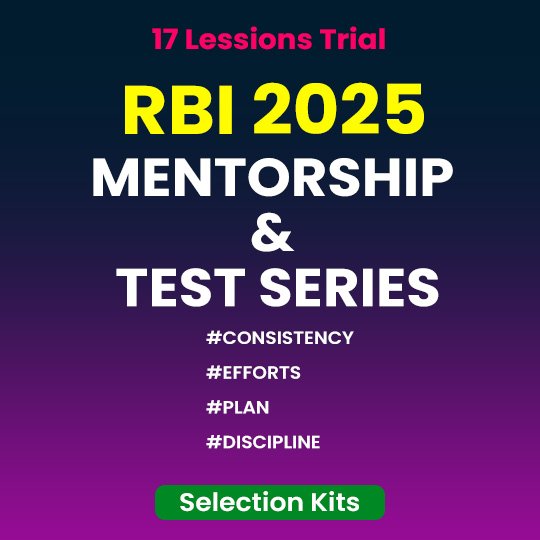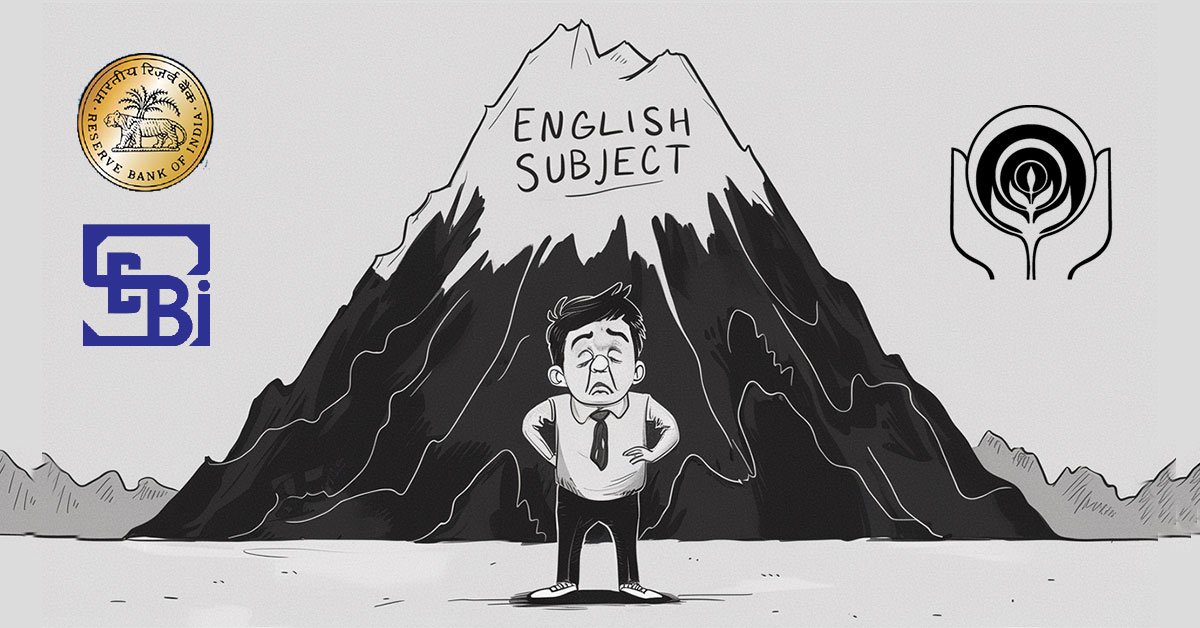Daily Current Affairs Quiz
18 & 19 May, 2025
National Affairs
1. India Imposes Port Restrictions on Imports from Bangladesh
Context:
India has imposed port restrictions on specific imports from Bangladesh, citing reciprocal trade measures following Bangladesh’s restriction on Indian exports via land ports.
Key Developments:
- Immediate Restriction on RMG Imports:
- Bangladesh can no longer export ready-made garments (RMG) to India via land ports.
- RMG imports from Bangladesh are now restricted to:
- Kolkata Port
- Nhava Sheva (Mumbai) Port
- These shipments will be subject to mandatory inspections.
- Trade Reciprocity Reasoning:
- Bangladesh restricted Indian yarn exports via land ports from April 13, 2025.
- Also stopped Indian rice exports via Hili and Benapole ICPs from April 15, 2025.
- India has cited aggressive inspection of Indian trucks and trade imbalance as reasons.
- Geographical Scope of Ban:
- Imports from Bangladesh of specified items are now barred through land ports (LCSs and ICPs) in:
- Assam
- Meghalaya
- Tripura
- Mizoram
- Imports from Bangladesh of specified items are now barred through land ports (LCSs and ICPs) in:
List of Specified Commodities Under Import Restriction
- Ready-made garments (all categories)
- Plastic goods
- Wooden furniture
- Juices and fruit-flavoured drinks
- Carbonated beverages
- Bakery and confectionery products
- Cotton yarn
- Dyes
Impact & Implications:
- May strain India-Bangladesh bilateral trade ties.
- Promotes domestic manufacturing in India by limiting low-cost imports.
- Could significantly reduce cross-border trade via India’s Northeast region.
2. National Manuscripts Mission
Date of Launch: June 9, 2025
New Name: Gyan Bharatam Mission
Context:
The Government of India is relaunching the National Manuscripts Mission (NMM) under a new avatar, Gyan Bharatam Mission, to enhance efforts in manuscript conservation, digitization, and cultural preservation.
Key Features of the Gyan Bharatam Mission
- Objective:
- Survey, document, and conserve over 1 crore Indian manuscripts across:
- Academic institutions
- Libraries
- Museums
- Private collections
- Survey, document, and conserve over 1 crore Indian manuscripts across:
- Scope:
- The mission aims to digitize, preserve, and provide public access to India’s manuscript heritage spanning various regions and languages.
- Institutional Framework:
- NMM, originally set up in 2003 under the Indira Gandhi National Centre for the Arts (IGNCA), will be revamped.
- An autonomous body is likely to be constituted for efficient functioning.
- Planning and operational oversight led by the Union Culture Secretary.
Budgetary Allocation
- Previous Allocation: ₹3.5 crore
- Revised Allocation (2025–26): ₹60 crore
Current Status of Manuscript Digitization
- Metadata prepared for: 52 lakh manuscripts
- Digitized titles: Over 3 lakh
- Uploaded content: Only one-third of digitized titles available online
3. India Semiconductor Mission (Semicon 2.0)
Context:
India aims to achieve 5% of global semiconductor chip production capacity by 2030. This initiative is part of the next phase of the India Semiconductor Mission (Semicon 2.0).
Incentive Scheme & Investments
- The Government has committed $10 billion (₹82,000 crore approx.) as incentives under the mission.
- So far, six major projects have been approved with total investments exceeding ₹1.55 trillion, including:
- ₹91,000 crore for Tata’s fab plant
- Remaining funds are for OSAT and ATMP facilities
Current Approved Projects and Output
| Company / Project | Type | Daily Chip Capacity (in million) |
|---|---|---|
| Tata | Fab | 48 |
| HCL-Foxconn JV | OSAT | 1.2* |
| CG Power | OSAT | 15 |
| Kaynes | OSAT | 6.3 |
| Micron | ATMP | 4.8 (expected by end-2025) |
| Polymatech (Chennai) | ATMP | 6 (currently operational) |
| Suchi Semicon (Gujarat) | State cleared | 10 |
| RRP Electronics (MH) + RIR Power (Odisha) | State cleared | 6 (combined est.) |
Ecosystem Development under Semicon 2.0
- Focus areas:
- Supply chain development: Chemicals, gases, and other fab inputs
- OSAT/ATMP market: India targets 25% share globally in 10 years
4. EOS-09 (Risat-1B) Satellite
Context:
The Indian Space Research Organisation (ISRO) recently witnessed a rare failure of its Polar Satellite Launch Vehicle (PSLV), leading to the loss of the EOS-09 (Risat-1B) satellite. This event has triggered technical introspection, given PSLV’s high success record and strategic importance.
EOS-09 (RISAT-1B): India’s C-Band Radar Imaging Satellite
Overview:
- Full Name: Earth Observation Satellite-09 (EOS-09)
- Formerly Known As: RISAT-1B
- Developed By: Indian Space Research Organisation (ISRO)
- Mission Type: Earth observation using Synthetic Aperture Radar (SAR)
Key Features:
- Technology Used:
- C-band Synthetic Aperture Radar (SAR)
- Enables imaging regardless of weather or lighting conditions
- Complements data from Resourcesat, Cartosat, and RISAT-2B series
- Launch and Orbit Details:
- Liftoff Mass: 1,710 kg
- Orbit Type: Polar Sun-synchronous orbit
- Orbit Altitude: ~529 km
- Local Time of Descending Node (LTDN): ~05:30 AM
Purpose and Applications:
- Designed to provide continuous and reliable remote sensing data
- Used for agriculture, forestry, soil moisture, disaster management, and defense applications
- Part of RISAT (Radar Imaging Satellite) series; EOS-09 is the 7th satellite in the series
Significance of PSLV in India’s Space Program
- Versatility: Launches to Low Earth Orbit (LEO), Sun-Synchronous Orbit (SSO), and even Geostationary Transfer Orbits (GTO)
- Major Contributor: Accounts for 60%+ of ISRO’s total launches over three decades
- Global Role: Main vehicle behind the launch of ~400 commercial satellites, most being foreign payloads
- Strategic Dependence: PSLV remains crucial as SSLV is nascent and GSLV/LVM-3 are yet to be fully commercialized
TOI
5. SWAYAM Platform
Context:
Banaras Hindu University (BHU) has been appointed as the national coordinator for the Institutions of National Importance (INI) domain on the SWAYAM platform, replacing IIT Madras/NPTEL. The move marks a strategic shift to diversify online learning beyond STEM disciplines, aligning with the goals of the National Education Policy (NEP) 2020.
SWAYAM Platform
- SWAYAM is India’s central online learning platform with 10 national coordinators, including:
- UGC, AICTE – Higher education
- NCERT, NIOS – School education
- NPTEL – Science & Technology
- IIM Bangalore – Management
- Now BHU – INI domain (excluding pure technology courses)
Banking/Finance
1. What is a Derivative?
A derivative is a financial contract whose value is based on an underlying asset (e.g., stock, index, gold, oil).
- Examples:
- Gold Futures → Underlying: Gold
- Nifty Futures → Underlying: Nifty 50 index
Types of Derivatives in India
- Futures Contracts
- Obligation for buyer and seller to transact at a predetermined price on a future date
- Unlimited loss potential if market moves against the position
- Options Contracts
- Call Option: Right to buy an asset
- Put Option: Right to sell an asset
- Buyer has no obligation, only the premium is at risk
- Risks: Premium decays over time (Theta decay), may lead to capital erosion
Why So Many Warnings Against Derivatives?
Global Perspective: Warren Buffet
- 2002: Called derivatives “financial weapons of mass destruction”
- 2008: Warned they are “dangerous” and act like “time bombs“
Indian Regulators’ Concerns
- Madhabi Puri Buch (Former SEBI Chairperson):
- Expressed surprise and concern at rising retail F&O participation
- Over 90% of individuals trading in derivatives incur losses
- Nirmala Sitharaman (Finance Minister), Ashishkumar Chauhan (NSE Chief), and CEA V. Anantha Nageswaran:
- Have all cautioned against excessive trading in derivatives
Risks Associated with Derivatives
1. Not a Long-Term Asset
- No ownership or long-term appreciation
- Contracts expire; no wealth creation unlike equities
2. Leverage Risk
- Enables large trades with small capital
- Small market movements can cause huge losses
3. Misuse by Retail Investors
- Originally designed for hedging risk
- Often used by retail traders for speculation without understanding
- Results in capital erosion and financial distress
4. Time Decay in Options
- Premium paid for options loses value over time (like melting ice cream)
- Many are unaware of option Greeks, especially Theta
5. Illusion of Safety in Options
- Perceived as less risky due to “limited loss”
- But most option buyers lose entire premium, especially near expiry
2. RBI’s Contingent Risk Buffer and Surplus Transfer
What is the Contingent Risk Buffer (CRB)?
- The CRB is a reserve maintained by the RBI to cover unexpected risks and losses.
- It is a component of the Economic Capital Framework (ECF), based on recommendations by the Bimal Jalan Committee.
- The current CRB range is 5.5% to 6.5% of the RBI’s balance sheet.
Recent Developments
- The RBI’s Central Board recently met to review the ECF.
- It has sought the Government’s approval to expand the CRB range, citing increasing vulnerabilities and macroeconomic fluctuations.
- An expanded CRB range could provide the RBI more flexibility in managing economic shocks.
Implication for Surplus Transfer
- The transferable surplus from the RBI to the government depends on how much CRB is maintained.
- Higher CRB → Lower surplus transfer
- Lower CRB → Higher surplus transfer
Why It Matters
- The CRB acts as a financial safety net for the central bank.
- Modifying the CRB range impacts:
- Government finances (due to surplus dependency)
- RBI’s risk-taking capacity
- Investor and market confidence in the RBI’s risk management
3. The Alternative Investment Funds (AIFs) Industry
Context:
The Indian Venture and Alternate Capital Association (IVCA) has urged SEBI to set up an inter-regulatory platform to:
- Facilitate coordinated discussions between SEBI, RBI, IRDAI, PFRDA, and other stakeholders.
- Address operational hurdles and promote domestic capital formation.
- The proposal was made during a meeting with SEBI Chairman Tuhin Kanta Pandey earlier this month.
Key Issues
- RBI’s December 2023 circular restricted bank/FI investments in AIFs with downstream exposure to debtor companies.
- Partial relaxation in March 2024, but some banks still face challenges in honouring capital calls.
- Industry is urging regulatory clarity and harmonization across regulators to prevent compliance bottlenecks.
Strategic Focus Areas for AIF Reform
Shift Towards Accredited Investors
- Emphasis on:
- Simplifying registration using public data infrastructure (tax filings, depository ownership records).
- Tapping into the potential of high net-worth individuals with greater risk appetite and financial knowledge.
Revisiting Outdated Norms
- Calls for:
- Regulatory modernization in line with global standards.
- Simplified compliance for smoother fund operations and enhanced investor participation.
BS
4. IBC Amendment and RERA Participation
Context:
The Insolvency and Bankruptcy Board of India (IBBI) has amended corporate insolvency regulations.
- Now allows RERA authorities to participate in Committee of Creditors (CoC) meetings during resolution of stressed real estate assets.
- This move acknowledges RERA’s key role, but the involvement remains purely consultative.
Need for Structural Reforms
Proposed Solutions
- Statutory mechanisms are needed for regulatory coordination in sectoral insolvencies.
- Sector-specific authorities must:
- Institute claim-processing systems
- Attend CoC meetings as stakeholders
- Provide timely approvals for resolution plan implementation
Current Amendment Is Inadequate
- The IBBI’s amendment is a symbolic gesture, not a structural reform.
- Legislative clarity and integrated frameworks are essential to resolve real sector insolvency effectively.
BS
5. RBI Enforcement and Penalties in FY24
Context:
RBI imposed penalties in 281 instances totaling ₹86.1 crore in FY24, up from ₹40.4 crore (211 cases) in FY23.
- State-run and private banks saw increased penal action; foreign banks and small finance banks saw a decline.
- Highest historical penalty: ₹58.9 crore on ICICI Bank (March 2018) for HTM securities violations.
RBI’s Scale-Based Enforcement Framework
- A new enforcement strategy aligns penalties with a regulated entity’s (RE’s) size, complexity, and risk.
- This move followed high-level meetings by RBI Governor Shaktikanta Das with public and private bank boards in May 2023.
- Clawback provisions from RBI’s 2019 circular (effective FY20) are being tested but face long litigation timelines (e.g., Yes Bank case).
Legal Framework
- RBI is empowered under Sections 46 and 47A of the Banking Regulation Act, 1949, but has yet to act against individuals.
- Suggestion: Adopt a UK-style Senior Managers & Certification Regime (SMCR) for personal liability.
Fraud Detection: Lag Still a Major Problem
- FY24 frauds involved ₹21,367 crore in 18,461 cases vs ₹2,623 crore (14,480 cases) in FY23.
Technology Gaps in Fraud Detection
- Most systems detect known fraud patterns, causing delays in identifying new fraud techniques.
- Jaya Vaidhyanathan, CEO, BCT Digital: Calls for real-time surveillance, adaptive AI/ML systems to shift from detection to fraud prevention.
Need for Sector-Wide Governance Reform
- Experts note India’s penalties are modest compared to global regulators.
- RBI’s governance reforms need to expand beyond banks to all regulated entities (REs), including NBFCs, HFCs, CICs, etc.
- Current penalties may be seen as just another operating expense unless backed by stronger governance-linked pay structures and disclosure norms.
6. Customer Service and Accountability in Indian Banking
Context:
The Indian banking sector is undergoing a paradigm shift in customer service, driven by direct interventions from the Ministry of Finance and the Reserve Bank of India (RBI). A recent incident involving a surprise branch visit by DFS Secretary M. Nagaraju highlights the push for accountability and excellence in customer care.
CPGRAMS Revitalization
- CPGRAMS (Centralised Public Grievance Redress and Monitoring System) is now more active than ever.
- Citizens can file grievances via web and mobile (including UMANG app).
- DFS’s rank is currently low (21st) due to many unresolved banking and insurance complaints.
CPGRAMS: India’s Unified Online Public Grievance Redressal System
Overview:
- Full Form: Centralized Public Grievance Redress and Monitoring System
- Developed By: National Informatics Centre (NIC)
- Managed By: Department of Administrative Reforms and Public Grievances (DARPG)
- Availability: 24/7 online portal for citizens
Key Features:
- Purpose:
- Enables citizens to lodge grievances related to service delivery
- Integrates all ministries/departments of the Central and State Governments
- Access:
- Role-based login for officers across government levels
- Citizens receive a Registration ID to track and file appeals
RBI’s Push for Customer-Centric Banking
- RBI Ombudsman data (FY 2023-24):
- Complaints grew at 50% CAGR, touching 9.34 lakh.
- 57% of maintainable complaints required formal RBI intervention.
- 10 million+ complaints recorded across 95 scheduled commercial banks.
- Maintainable issues include frauds, wrongful charges, foreclosure fees.
- RBI has flagged:
- KYC updates turning into “HYC – Harass Your Customer”.
- Misselling of financial products, particularly to rural customers.
BS
7. Capital Adequacy Ratio (CAR)
Context:
Shapoorji Pallonji Group has asked the Reserve Bank of India (RBI) to give its unit, Sterling Investment Corp, three years to meet enhanced capital adequacy norms in relation to a recent bond issue, said people with knowledge of the matter.
What is Capital Adequacy Ratio (CAR)?
The Capital Adequacy Ratio (CAR) is a key financial metric used to assess a bank’s ability to withstand financial stress by maintaining sufficient capital reserves. It is a regulatory requirement that ensures banks can absorb potential losses while continuing to operate, thereby protecting depositors and maintaining financial system stability.
Key Features of CAR:
- Reflects a bank’s financial strength and risk management capability.
- Ensures banks maintain capital buffers against possible losses.
- Higher CAR means lower risk of insolvency.
- Enforced by central banks and regulators to promote a stable banking sector.

Components of CAR
- Tier 1 Capital (Core Capital):
- Absorbs losses while the bank continues to function.
- Includes: Equity share capital, retained earnings, disclosed reserves.
- Tier 2 Capital (Supplementary Capital):
- Absorbs losses in case of a bank’s winding up.
- Includes: Revaluation reserves, hybrid instruments, subordinated debt.
- Risk-Weighted Assets (RWA):
- Assets adjusted for credit, market, and operational risks.
- Not all assets carry the same risk—this calculation ensures a more accurate risk assessment.
CAR Requirements in India (as per RBI norms):
- 12% for Indian Public Sector Banks
- 9% for Indian Scheduled Commercial Banks
(Note: These are above the Basel III minimum requirement of 6%, reflecting India’s cautious regulatory stance.)
Why is CAR Important?
- Ensures Financial System Stability: Limits risk exposure, preventing systemic collapses.
- Protects Depositors’ Interests: Banks can honor withdrawals even during stress.
- Avoids Economic Disruptions: Minimizes the chance of a banking crisis.
- Compliance with Global Standards: CAR is a key component of Basel III regulations, which aim to enhance bank capital adequacy, stress testing, and liquidity management.
8. External Commercial Borrowings (ECBs)
Context:
Non-Banking Financial Companies (NBFCs) in India are increasingly turning to External Commercial Borrowings (ECBs) for cheaper and more diversified funding as domestic banks delay passing on the benefits of recent repo rate cuts.
External Commercial Borrowings (ECBs)
Definition:
- External Commercial Borrowings (ECBs) refer to loans in foreign currency borrowed by Indian entities from non-resident lenders.
- Widely used by Indian corporations and Public Sector Undertakings (PSUs) to access foreign capital.
Key Sources of ECBs:
- Foreign commercial banks
- Buyers’ and suppliers’ credit
- Securitized instruments: e.g., Floating Rate Notes (FRNs), Fixed Rate Bonds
- Export Credit Agencies
- Multilateral financial institutions: IFC (Washington), ADB, AFIC, CDC
Regulatory Framework:
- Governed under: Foreign Exchange Management Act (FEMA), 1999
- Regulated by:
- Department of Economic Affairs (DEA), Ministry of Finance
- Reserve Bank of India (RBI)
- ECBs can be raised via:
- Automatic Route: Cleared by AD Category-I Banks
- Approval Route: Requires prior RBI approval through AD Banks
Usage Restrictions:
- Not allowed for:
- Investment in stock market
- Speculative real estate activities
Permissible Use and Limits:
- Up to 25% of ECB proceeds can be used to repay rupee debt
- 75% must be used for new projects
- ECB cannot be used to refinance the entire rupee loan
- Minimum Average Maturity Period (MAMP) applicable to all ECBs
Sector-Specific Limits:
- Infrastructure & Greenfield projects: Up to 50% funding via ECBs allowed
- Telecom Sector: Up to 50% ECB funding permitted
- NBFC-IFCs: ECB limit raised from 50% to 75% of owned funds
- Automatic Route Caps:
- Corporates: Up to $750 million/year
- Service sector: Up to $200 million/year
- NGOs for microfinance: Up to $10 million/year
9. SEBI Expands Scope of Electronic Book Mechanism for Debt Market Efficiency
Context:
SEBI has made Electronic Book Provider (EBP) platform usage mandatory for all private placement debt issues of ₹20 crore or more.
- Earlier threshold: ₹50 crore
- Revised threshold: ₹20 crore
Expanded Scope of Applicability
- Instruments now covered under EBP mandate:
- Debt securities
- Non-convertible redeemable preference shares (NCRPS)
- Municipal bonds
- Instruments issued by REITs (Real Estate Investment Trusts)
- Instruments issued by InvITs (Infrastructure Investment Trusts)
Objective of the Move
- Improve transparency, price discovery, and efficiency in the debt market
- Streamline and standardize private placement processes
- Enhance credibility and robustness of the EBP mechanism
Background
- The move follows recommendations of a SEBI working group
- Incorporated public feedback before finalization
- Part of SEBI’s broader goal to deepen the corporate bond market in India
Implications
- Broader mandatory compliance with EBP norms across issuers
- Inclusion of newer market participants like REITs and InvITs
- Encouragement of wider investor participation and market integrity
10. PayU Gets Final RBI Approval to Operate as Payment Aggregator
Key Highlights:
- RBI Authorization Granted:
- PayU Payments Pvt. Ltd. has received final authorization from the Reserve Bank of India (RBI) to operate as a Payment Aggregator (PA) under the Payment and Settlement Systems Act, 2007.
- Regulatory Compliance:
- PayU’s approval confirms its compliance with RBI’s stringent norms, including:
- Merchant due diligence
- Maintenance of escrow accounts
- Grievance redressal mechanisms
- Strong operational and governance structures
- PayU’s approval confirms its compliance with RBI’s stringent norms, including:
- Background:
- The RBI has mandated since 2020 that all digital payment intermediaries must be authorized to ensure security, transparency, and consumer protection.
Over 180 entities had applied; only a select few have been granted final licenses so far.
- The RBI has mandated since 2020 that all digital payment intermediaries must be authorized to ensure security, transparency, and consumer protection.
Agriculture
1. Genome-Edited Rice Varieties
Context:
India has released the world’s first gene-edited rice varieties developed using CRISPR-Cas9 technology.
- These varieties target salinity tolerance, crucial for climate-resilient agriculture.
- Expected yield improvement: Up to 30%.
Deployment & Timeline
- Genome-edited rice varieties are not yet released but have been identified as promising.
- Seed production stages (breeder, foundation, certified seed) will take 2–4 years.
- Initial rollout through public sector channels like National Seeds Corporation (NSC).
Government Support & Programme
- A ₹500 crore government programme has been launched for genome editing across:
- Cereals, pulses, oilseeds
- Horticulture and livestock
- Focus: Trait-specific, location-specific, and crop-specific improvements (drought, flood, heat tolerance, etc.).
Intellectual Property Rights (IPR) & Farmer Protection
- The government will acquire freedom to operate licenses to address IPR concerns.
- No liability on farmers or consumers.
- Once released, farmers can retain and reuse seeds, reducing dependency on private firms.
Addressing Budget Constraints
- Budget constraints exist but can be mitigated by:
- Convergence across agencies
- Avoiding redundancy
- Promoting institutional synergy for higher impact
2. India Set to Launch Satellite-Based Handheld Soil Testing Tool for Farmers
Context:
The Government of India is working on a real-time, handheld digital soil testing tool using satellite-based technology. This tool aims to replace traditional soil testing, which is time-consuming, labour-intensive, and dependent on government laboratories.
Key Features of the Digital Soil Testing Tool
- Developed under the guidance of M.L. Jat, Secretary, Department of Agricultural Research and Education and DG, ICAR.
- Provides instant readings of:
- Soil texture
- pH level
- Organic matter
- Nutrient content
- Facilitates precision farming by enabling:
- Accurate application of fertilizers and irrigation
- Reduced input costs
- Improved crop yield
Technological Backbone
- A soil spectral library and national spectral depository is under development.
- Currently, the national depository houses over 40,000 soil spectra.
- 5,000–10,000 new samples will be added every year.
- Machine learning models will correlate soil spectra with soil properties for accurate analysis.
Advantages Over Traditional Methods
- Traditional soil testing takes several days and is costly.
- Soil Health Cards offer static, technical reports that are hard to interpret for non-experts.
- The new approach offers:
- Real-time, user-friendly results
- Personalized advice through mobile apps
- Accessibility for farmers with limited technical background
Complementary Initiatives
- Establishment of National Soil Survey Laboratories to support soil testing innovation.
- Plans to offer personalized agricultural recommendations via mobile or handheld devices.
Economic Context
- Agriculture contributes 18% to India’s GDP and employs 42% of the workforce.
- The FY26 Union Budget allocated ₹1.71 trillion to agriculture and allied sectors (up 20% from FY25 RE).
Significance
- This innovation is expected to transform Indian agriculture by enabling data-driven, site-specific soil management.
- Promotes sustainable farming, reduces environmental harm from fertilizer overuse, and enhances farmer income.
3. Govt releases 3 new crop varieties developed by BHU
Context:
Banaras Hindu University (BHU) has recently developed and released three new crop varieties aimed at enhancing agricultural productivity and resilience, particularly in Uttar Pradesh. These include two rice varieties and one mustard variety, each tailored to address specific agronomic challenges and improve farmer outcomes.The Times of India
Malaviya Manila Sinchit Dhan-1 (Rice)
- Development: A collaborative effort between BHU and the International Rice Research Institute (IRRI), led by Prof. Shravan Kumar Singh.
- Maturity: 115–120 days.
- Yield: 55–60 quintals per hectare.
- Grain Characteristics: Long, slender grains with a pleasant, slightly sweet taste.
Malviya Dhan 105 Sub-1 (Rice)
- Improvement: An enhanced version of the earlier Malviya Dhan 105, developed by Prof. P.K. Singh and his team.
- Feature: Incorporates the Sub-1 gene, enabling the plant to survive submergence for 14–15 days, making it suitable for flood-prone areas.
- Yield: 42–46 quintals per hectare.
Malviya Nidhi (Mustard)
- Development: Led by Prof. K. Srivastava.
- Maturity: 125–130 days.
- Yield: Approximately 20 quintals per hectare.
- Seed Characteristics: Bold, black seeds with an average oil content of 39.4%.
Science & Tech
1. Only 0.001% of Earth’s Deep Seafloor Visually Explored
Context:
A landmark study published in Science Advances reveals the staggering gap in visual exploration of the Earth’s deep ocean — defined as areas 200 meters or more below sea level. Despite covering two-thirds of Earth’s surface, this ecosystem remains largely uncharted.
Key Highlights:
Importance of Visual Imaging in Deep Ocean Research:
- Essential for contextualizing biological and geological sample collection.
- Critical for calibrating remote-sensing data.
- Helps understand marine biodiversity and geological formations.
Scope of the Study
- Conducted by U.S.-based researchers using data from:
- 43,681 visual dive records
- 34 institutions across 14 countries
- 120 Exclusive Economic Zones (EEZs) and high seas
- Data sources: Institutional archives, public databases, and published scientific literature.
Methodology and Estimates
- Two analytical approaches:
- Area-based estimation: Imaged area between 1,259 km² to 2,130 km²
- Duration-speed method: Estimated 3,823 km² covered in 66 years
- Conclusion: Only 0.001% of deep seafloor has been visually imaged.
Geographical Disparity and Bias
- 97% of dives from only five countries:
- United States, Japan, New Zealand, France, Germany
- No dive records from Africa and most of Latin America
- Topographic bias:
- Overrepresented: Canyons, escarpments
- Underrepresented: Abyssal plains (which dominate ocean floor)
Implications and Challenges
- Current visual data equals only half the area of Goa.
- Inferences on deep-sea ecosystems drawn from an extremely limited sample.
- If 1,000 imaging platforms operate at present speed (~3 km²/year/platform), it would still take 100,000 years to image the entire deep seafloor once.
Facts To Remember
1. Jagannath Temple in Digha: A Socio-Political and Cultural Milestone
Overview
- Inauguration Date: April 30, 2025 (Akshaya Tritiya)
- Location: Digha, Purba Medinipur, West Bengal
- Cost: ₹250 crore (public funds)
- Inaugurated by: CM Mamata Banerjee
- Temple Type: Replica of the 12th-century Jagannath Temple in Puri, Odisha
2. India beats Bangladesh in the U-19 SAFF summit clash
India defeated Bangladesh 4-3 via a penalty shootout to retain the SAFF U-19 Championship title on Sunday at the Golden Jubilee Stadium in Yupia, Arunachal Pradesh. The scores were tied 1-1 in regulation time, which forced the match into penalties.
3. Rajasthan’s beloved Sangri got GI Tag
Rajasthan’s beloved Sangri — the slender bean that adds a unique flavour to Rajasthani kitchens — has just been awarded a Geographical Indication (GI) tag.
4. GeM emerges as largest procurement platform globally
Government e-Marketplace (GeM) has emerged as one of the World’s largest and most efficient public e-procurement platforms, setting new benchmarks in accessibility and affordability.
5. ISRO forms probe panel after PSLV-C61 glitch leaves EOS-09 off-target
Indian Space Research Organisation (ISRO) has formed a committee to investigate the incident in which a PSLV rocket failed to place the Earth observation satellite, EOS-09, into its intended orbit.
6. Fisheries Sector Outpaces Agriculture, Contributes 9% to Economy: Minister Rajeev Ranjan Singh
Union Minister for Fisheries Rajeev Ranjan Singh today said that the fisheries sector is contributing more to the country’s economy when compared with the agriculture sector.
7. Foreign Investors Pour ₹18,600 Cr into Indian Stocks in May
Foreign investors pumped in over 18,000 crore rupees into the Indian equities market so far in May on global positive cues and improving domestic conditions. According to the depository’s data, the Foreign Portfolio Investors, or FPIs, invested 18,620 crore rupees into the equities market but pulled out 6,748 crore rupees from the debt markets so far in May.















